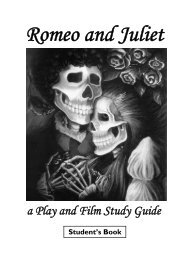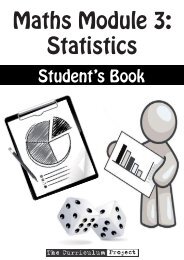Student's Book â Dec 2009 (5.9mb) - The Curriculum Project
Student's Book â Dec 2009 (5.9mb) - The Curriculum Project
Student's Book â Dec 2009 (5.9mb) - The Curriculum Project
Create successful ePaper yourself
Turn your PDF publications into a flip-book with our unique Google optimized e-Paper software.
exercisecomprehensionexerciseinterpretingcartoonsdiscussionA. How did the people of East Timor try to make political change after Portugal left?B. What event in Indonesia most influenced East Timor’s political history?C. How did Indonesia respond to the referendum for independence in East Timor?D. What was the economic impact of that response?E. Who helped East Timor finally gain political independence from Indonesia?F. Why did the people of East Timor riot after they gained independencefrom Indonesia?G. What is the mainchallenge facing EastTimor today?H. Name three waysthe government isresponding to thatchallenge.A. According to thecartoon on the right,what are the maincauses of problems inEast Timor?B. Why is East Timorpictured as a volcano?Look back at yourpredictions from page 53.Were you correct?KEY WORDSdissent (n) – disagreement or protestimplement (v) – apply or put into effectintellectual (n) – a person who uses his/her mind creatively, a thinker, someone who hasstudied a subject in great detailmonument (n) – a place or structure which helps people remember an importantperson or eventsuspected (v) – those believed to be guilty but without proofModern CambodiaFrom 1967 to 1975, Cambodia was in a state of civil war. On one side were communist forces,supported by North Vietnam, and on the other side were Cambodian government forces,supported by the United States and South Vietnam. At the end of the civil war, the communiststook control of Cambodia. <strong>The</strong>y formed the group which would later become known as theKhmer Rouge.In 1976, under the Khmer Rouge, Cambodia became the state of Democratic Kampuchea andstarted implementing drastic changes. All private possessions became state owned. Familieswere separated into different work groups and forcibly relocated to the countryside to becomeagricultural laborers. Over two million people were moved from cities to rural areas. Cambodianswere forced to work for up to twelve hours a day, often with little food or rest. Between one totwo million people died from execution, overwork, starvation or disease during the reign of theKhmer Rouge.<strong>The</strong> Khmer Rouge did not accept political dissent. Those suspected of connections with eitherthe former Cambodian government or with foreign governments were executed. <strong>The</strong> regimealso killed and arrested intellectuals and professionals, including many of the country’s doctors,teachers and lawyers.69



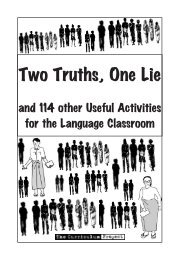
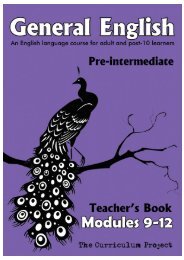
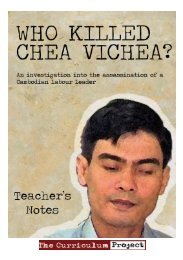

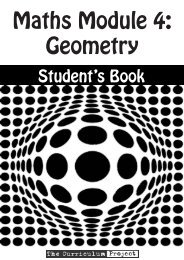
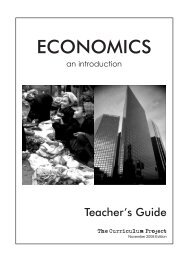
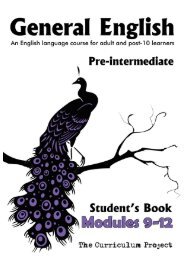

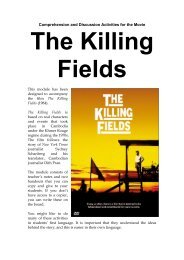
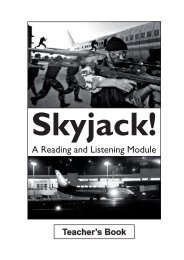
![[Eng] Nov 2012 DRAFT - The Curriculum Project](https://img.yumpu.com/45590859/1/184x260/eng-nov-2012-draft-the-curriculum-project.jpg?quality=85)

